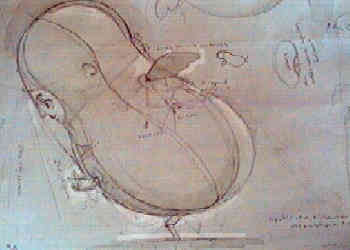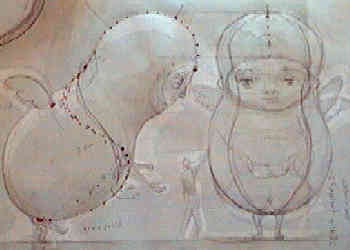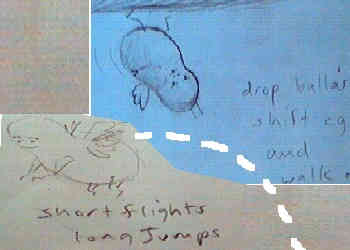

Two Flying Humanoids successfully tested over downtown Austin, June 5, '99. Sponsored by the Austin Museum of Art's Robots Live! program.
These were quite large – see the drawing of a person for comparison.

Source: http://www.main.org/polycosmos/android/flyer/mrpeanut.htm
The Humanoid Airship
A "flying peanut" winged humanoid robot is under development for the opening of Austin's new airport.
The shape is a compromise between lifting gas volume and humanoid expression.
Wall walking is a new wrinkle. The winged humanoid is to be able to walk on a vertical wall or cieling by powering into it with its wings to provide foot traction and directional vectoring.
A persistent question is to be able to shift the robot's center of mass around its center of buoyancy, and manipulate its buoyancy so as to support wall and ceiling walking. a) balance robot neutrally and use vectored wing thrust to apply foot pressure to any surface. b) drop distributed ballast masses, vent helium, and maintain ballonets. c) shift ballast dynamically.
robofest 93
The dominant features of the larger room, whenever they were flying, were the blimps, 20 foot long aluminized mylar airships with instrument platforms slung beneath their bulk. I have already described one of them, the Ornithopter. Although not really a robot, but rather a radio controlled airship, it was nonetheless captivating by its sheer zaniness. Looking like a blimp designed by Hieronymus Bosch (in reality, by Founding Member David Santos), it flew by flapping its absurdly undersized wings, and when near the floor it ran on a pair of semi-realistic plastic legs.

David Santos
See other Pneumatic, Fluidic, and Inflatable robots here.